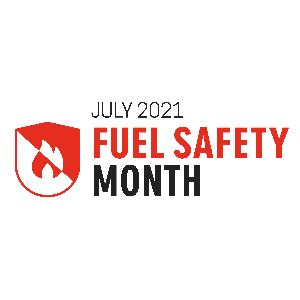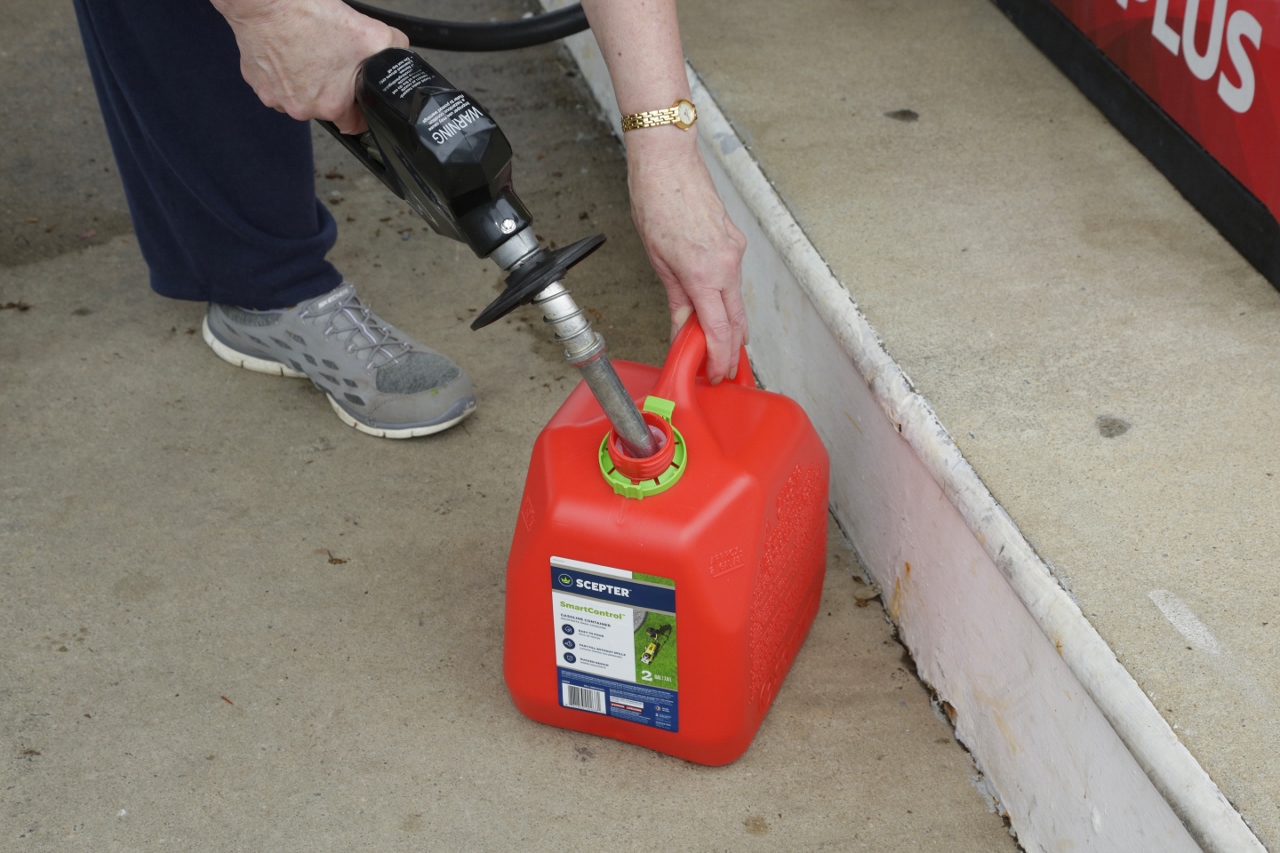July is Fuel Safety Month
iCrowdNewswire
Jul 01, 2021

MIAMI, OKLA. – Following the Colonial Pipeline closure earlier this year, a great deal of attention was focused on how not to transport gasoline and other fuels. During Fuel Safety Month in July, experts at Scepter® provide insights on how to safely use approved fuel containers for gasoline, diesel and kerosene fuels.
“During the gas shortage we saw people using everything from milk jugs to soda bottles to plastic bags to load up on fuel,” says Dan Marshall, vice president of marketing and business development with Scepter. “People were also filling containers in their car trunks and the back of pickup trucks. These are all dangerous and irresponsible acts.
“It’s important to know that only tested, certified fuel containers should be used for fuel storage. In addition, containers should always be removed from a turned-off vehicle and placed on the ground a safe distance away when filling.”
Marshall says that using a dependable fuel container eliminates dangers during accidental spills. A dropped bucket, bag or other unreliable container with gasoline could cause an environmental, safety or potential fire situation. Durable, high density multi-layered polypropylene fuel containers, like Scepter® SmartControl™ containers, are a safe choice for transporting and storing fuels.
Tips for Fuel Safety – Choosing the Right Container
During Fuel Safety Month, Scepter officials are shining a spotlight on safety tips relevant to both children and adults in a variety of everyday settings.
Tip #1 – Inspect your existing fuel container regularly for leaks or cracks. If you see any signs of aging, carefully dispose of the container and purchase a new one.
Tip #2 – If you need to buy a new fuel container, seek out one with controllable flow, child safety features and Flame Mitigation Device (FMD) for safety. Even with an FMD on a unit, fire and fuel should never be mixed.
Tip #3 – Only purchase fuel containers from trusted brands, like Scepter, that are available from top retailers both in store and online.
Tip #4 – Once you have a new fuel container, do not remove or alter the FMD inside the opening of the container in any way.
Tips: Fueling Up at the Pump
Tip #5 – Put only the proper fuel in the proper container. Universally, red containers are for gasoline, blue containers are for kerosene, and yellow containers are for diesel.
Tip #6 – Before going to the pumps, look at the products you require fuel for. Not all fuels are the same. Select the right fuel for your outdoor power equipment. Do not use fuel that has a higher than recommended ethanol content for your equipment.
Tip #7 – Never allow children to operate pumps or fill up fuel containers. And, never smoke when filling a gas tank or fuel container.
Tip #8 – Make sure to follow proper filling instructions for containers with FMDs. (see instructional video)
Tip #9 – Remove fuel containers from vehicles before refilling, and turn off your vehicle’s engine. Place containers on the ground a safe distance from a vehicle when refilling. Do not leave the containers in the back of a pickup truck or in the trunk of a car when filling.
Tip #10– Look for a “fuel fill line” on your container. Never fill past this mark. Leaving some space in the container allows for expansion.
Tip #11– Fuel containers can build up a static electric charge during transport. Touch the container with the gas dispenser nozzle before removing the container lid to ground the static electricity charge.
Tip #12 – Keep the nozzle in contact with the container when filling it to prevent build up of a static charge. If a static-caused fire occurs, leave the nozzle in the fill pipe. Immediately move away from the vehicle and notify the station attendant.
Tip #13 – Carefully wipe away any fuel spills, either during the filling of the container or when using the container.
Tip #14 – Secure your filled fuel containers in your vehicle against tipping and sliding. Never leave containers in a car trunk or flat bed, and keep out of direct sunlight.
Tips: Using Fuel for Outdoor Chores
Tip #15 – Use fuel outside only, in well ventilated areas where you will not breathe in the fumes.
Tip #16 – Do not smoke when using fuel or when near a fuel container. One spark can cause gasoline vapors to ignite.
Tip #17 – Never fuel a piece of equipment while it is running. Gasoline is a fluid with fumes that can generate dangerous explosive power. Keep gasoline away from ignition sources and hot or running equipment.
Tip #18 – If you run out of fuel during a project, like cutting the grass, let the hot motor
cool down before adding more fuel. This eliminates the risk that fuel is accidentally spilled on a hot surface. If this happens, the fuel or fumes could ignite and potentially explode.
Tip #19 – Should a flammable liquid spill in or outside the home, there can be a vapor or fire hazard. Immediately contact your fire department or local authorities for full cleaning instructions and restrict access to the spill area from children and pets.
Tip #20 – Do not siphon any type of fuel by mouth. Instead, invest in a siphon pump.
Tips: Outdoor Activities
Tip #21 – Gasoline is not a lighter fluid. Never try to start or accelerate a bonfire, barbeque, or grill with gasoline. (See an important video on fire tips)
Tip #22 – Do not allow children near fuel containers or running equipment.
Tip #23 – Don’t guess. Check beforehand to determine the type of fuel recommended for your outdoor lawn and sports equipment. Follow all safety recommendations by the product’s manufacturer. And, if you use a specific container for a fuel/oil mix, make sure to mark the container with a permanent marker to remind yourself what this container holds for future use.
Tip #24 – Use only appropriate pesticides for killing ant hills, wasp nests and beehives. Never use any type of fuel for this purpose.
Tip #25 – Gasoline should never be used as a cleaning agent, or to wash hands.
Tip #26 – Choose the right container for outdoor activities. While a Scepter SmartControl container is ideal for family chores, easy to transport Scepter Marine Containers are designed for boating needs.
Tips: Fuel Can Storage
Tip #27: When not in use, store any filled fuel containers in a secure, dry location away from pets and easy access by children. Never store filled fuel containers in a vehicle or in living space, like a home or trailer.
Tip #28 – When storing in a garage, make sure to store fuel containers away from furnaces, hot water tanks and any other potential source of heat.
Tips: Disposal of Old Fuel
Tip #29 – Know your fuel. Winter fuel is heavier, and a unique blend. Fuel available in the spring and summer is different and should be used for lawn care and sporting equipment.
Tip #30 – Dispose of any winter mix of gasoline stored in containers by putting it in your car with a funnel. The small amount of winter fuel will easily mix in with the gasoline in your tank.
For consumers, Scepter offers innovative Scepter™ SmartControl™ fuel containers for gasoline, kerosene and diesel. The rugged SmartControl containers are Made in America and designed to substantially exceed ASTM and CPSC minimum standards. All Scepter portable fuel containers in the United States already include FMDs certified to the new ASTM F3326 standard. Plus, each product includes child safety locks.
Recognized by This Old House magazine as a “Top 20 Best New Product of 2019” in the Lawn & Garden category, SmartControl containers are also the recipient of the “Best in Class” Award at the 2018 National Hardware Show. Constructed in the U.S.A. of durable and safe high-density polyethylene, SmartControl containers can be found throughout the U.S. in The Home Depot®, Walmart®, Lowe’s®, AutoZone®, Pep Boys, Target and Northern® Tool + Equipment stores. Visit www.scepter.com for more information.
Contact Information:
Kathy Ziprik
828-890-8065
ZiprikPR@gmail.com



